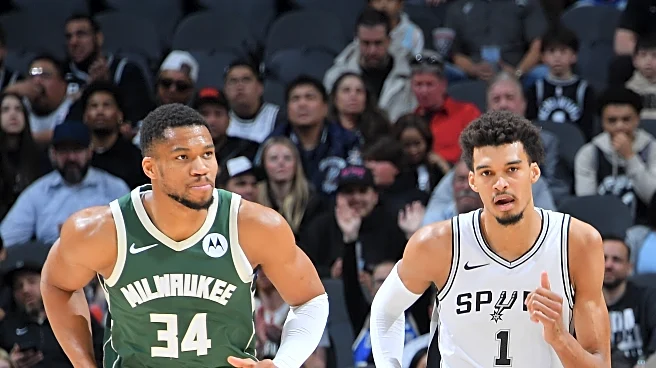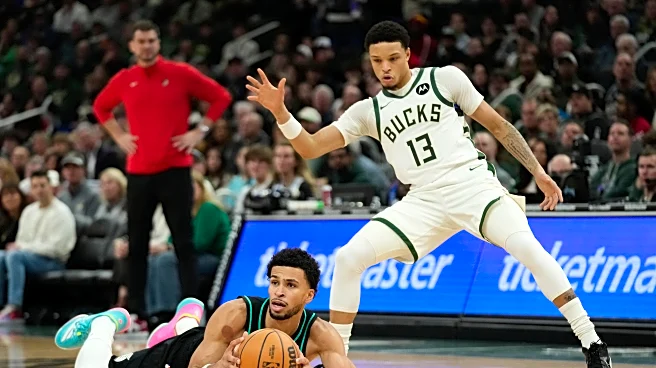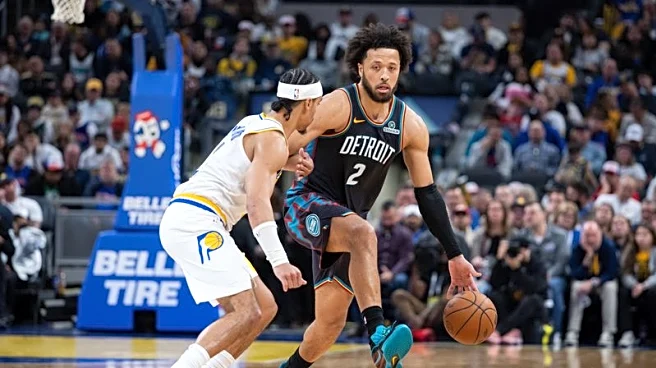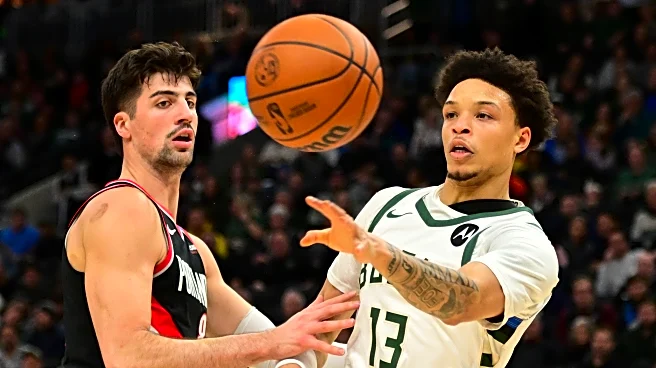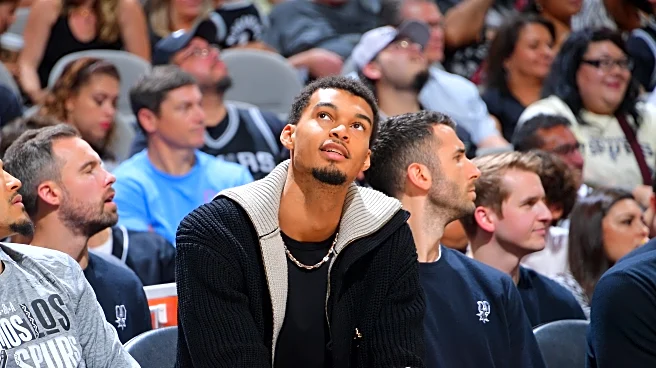NBA injuries are the hottest subject in sports this week. Even the return of LeBron James to the Los Angeles Lakers and the potential return of Kawhi Leonard to the Clippers after early-season injuries can’t
overcome the tidal wave of bad news for Victor Wembanyama, Giannis Antetokounmpo, and other NBA stars. A national radio host mentioned last night that 50% of the star players in the league are down with injuries at the moment. I haven’t verified if that’s true, but gosh, it sure seems like it.
The environmental frustration was highlighted by comments from Golden State Warriors Coach Steve Kerr last week on the injury issue. Kerr’s thought provoked the discussion we see today, across the land and in our very own Blazer’s Edge Mailbag.
Dave,
Steve Kerr stated [recently] that the faster pace of the game is causing injuries. This appears to be controversial but just on observation it seems like a lot of players are getting injured and those same players are playing faster. So two part question here. Do you agree with Kerr and what should the NBA do to cut back on injuries?
Walt
An important and obligatory caveat: I’m not a doctor. I don’t play one on TV. I don’t claim any particular expertise and I haven’t studied the same data as Kerr, NBA trainers, and medical professionals. Take this response as homespun, with two grains of salt.
Wait. That’s bad for your heart. A grain and a half.
I’ve also listened to the arguments surrounding Coach Kerr’s statements. I think there are plenty of ways to go wrong with this. Most people appear to be taking them too. They include:
1. Equating correlation and causation.
Just because two things are happening at the same time doesn’t mean they’re related. The sun rises every day. I am single. Dang you sun for ruining my dating life!
2. Making this a generational [peeing] contest.
A lot of old heads are saying, “Back in the day we ran fast!” That’s true. Some experts speculate that pace was higher in the 60’s than it is now. (They didn’t start tracking it until 1973.)
Sometimes older players say, “We just knew how to train!” I’m not sure training methods were better back then than they are now. They’re certainly more widespread and specialized nowadays.
Either way, old basketball was good. New basketball is also good. Both should be respected.
Injuries don’t reflect quality of play as much as style. They don’t correspond to intelligence or wisdom of players or NBA medical staffers. Believe me, if there were ancient, hidden knowledge about how to prevent injuries, it would be neither ancient nor hidden. The Los Angeles Clippers would be practicing it every day.
3. Oversimplifying.
You can’t just look at a stat like pace–basically number of possessions, indicating how fast a team shoots with a little bit of rebounding and turnovers thrown in–and make a broad-based declaration about injuries. Faster can mean more damaging. It doesn’t have to. Otherwise Olympic sprinters would have far more injuries than marathoners. I’m not sure that’s true. Plenty of other factors come into play.
Nor can you come up with tidy, easy solutions. I’ve heard experts say, “Players need to practice and play less to ease the strain!” I’ve heard other experts say, “No, they need to practice and play more to condition their bodies to the strain!” Which is it? I’m not sure anybody knows.
At the risk of oversimplifying myself, I tend to look at things this way.
Speed forward and back aren’t the issue. The red flags in today’s game are probably the lefts and rights, to a lesser extent at the ups and downs too.
I’ve run for most of my adult life. I used to go way farther than I do now, but I still get a few miles in every day. I can run in a given direction as long as I need to. I can turn around and run back the same amount without any problem. I can also do whatever combination of those two is necessary and nothing super stressful will happen to me. Two miles out and two back or one-out-one-back and repeat, it’s the same running, the same four miles.
That’s basically “pace” in the NBA, the number of times running straight up and down the floor. NBA teams running straight up and back 96 times or 102 times probably doesn’t make a huge difference. It’s just conditioning and who you sub in when.
Back to Runner Dave, though. Take that same mileage at relatively the same speed, but have me juke back and forth doing high-steps and change of direction, going laterally with each stride, stopping and reversing then starting forward again, occasionally jumping up and down in the process. Instead of running straight down the trail, I’m cutting sideways on a dime, avoiding bowling balls that bystanders are rolling in my path, dodging antelopes, leaping over lemurs, trying to prevent meerkats from getting by me going the other direction and chasing them down when they do.
You know what’s going to happen? First, I’m going to be exhausted. Second, even if I trained myself to be able to accomplish this, the wear and tear on my body–particularly my bendy and stretchy parts–is going to be enormous. I bet in less than three weeks I’d be injured and done.
Obviously professional athletes are much better trained and honed than I am. They can do the lateral back-and-forth with quick starts, stops, and leaps far better than I. But that actually feeds into the argument. How long have they been training their bodies in this specific way in order to accomplish these superhuman feats? They’ve been meerkat wrangling since they were, what? 13? 10? 8? And every year those ‘cats get bigger so every year our wranglers have to get bigger, stronger, and have to go faster in order to accomplish the same goal.
In the process, they’re putting so much repetitive strain on their bodies in such unique ways that, inevitably, it’s going to break down somewhere.
No matter how talented you are, you cannot beat physics. One of the foundational equations of science says that Force = Mass x Acceleration. As athletes get bigger and move faster, they’re putting more force on their bodies. But they’re not exposing themselves in ways normal people do…going straight line, efficiently, applying the force in the exact places and ways the body is meant to handle it. They’re literally trying to escape, to do something that frees them from defenders: go left, right, spin, leap and land. They’re applying that force sideways and vertically, doing near-superhuman things that nobody else could accomplish at that speed, under those stresses.
Imagine picking up a walking stick in the woods. How do you use it? You put it in your dominant hand and move it in a single plane, front and back. You can lean on that thing with as much body weight as you want. It’ll last forever doing that. That’s normal walking stickery.
Imagine that same walking stick but the force of your body and motion is coming sideways, from diagonal planes, you’re bending it in weird and unexpected ways with each step. It may not break, but it’s at least going to crack, right? Welcome to an athlete’s body.
The issue isn’t that today’s players are running up and down the floor faster or getting up shots quicker. They could do that all day and probably not get injured more than usual. The reality of the modern game is that everyone is hyper-athletic, a springy and rangy defender. With all due respect, you’re not trying to drive around or leap over Steve Kerr anymore…and yes, there were a half-dozen specialists or slower guys–big and small–on most every team back in the day. Instead your 8th man is Kris Murray and your 11th is Rayan Rupert and your third-string center is a quick-and-stringy guy who can block shots as high as the backboard square and shoot from distance like an old-time guard. And P.S. you only get to those guys after you’ve tired out Deni Avdija, Toumani Camara, and Jerami Grant.
Running down the floor faster than the opponent just isn’t possible most possessions. You’ve got to juke, fake, sidestep, cut back and forth just to get half an inch of separation for your shot. If that’s a jumper, you can’t take it flat-footed. Unless you’re wide open, you’re elevating as high as you can to get that release. If it’s a drive, you have to get by a secondary defender, then go a different direction with your leap just to sniff the bucket.
Modern players, particularly defenders, have to cover more of the floor than ever before because of the predominance of the three-point shot. It’s not just a 94-foot game anymore. The court is 50 feet wide too. You move sideline to sideline, closing hard on defense, coming to a halt and reversing direction to stay in front of your man, coping with all the moves he’s making (as mentioned above)…all of this on the same damn play.
Arvydas Sabonis was a slow defender by the time he got to the Trail Blazers in 1995. I remember watching him lumber. You know what I don’t remember? Anybody complaining about whether he was showing at the three-point arc then recovering to the lane. He didn’t have to. The Blazers worked around it. They could do that because the three-point shot wasn’t anywhere near as prominent as it is today.
Nowadays a center who can’t get out to the arc and back to the rim in the same possession won’t even see the floor. He won’t be on the roster in the first place unless he’s 7’3 and massive, and even then he’ll be played situationally on most teams. The same big men who were “ice”-ing into the lane regularly 8-10 years ago are gone. They just don’t exist in this league anymore outside of a couple dinosaurs. And if the huge guys have to be omnidirectional and mobile, imagine what’s going on with the guards.
Long story short, if you want to cut down on these injuries, one of two things has to happen. Either:
- You magically make players less athletic. Or…
- You cut down on the area they have to cover.
The first is impossible. The second could be done easily by eliminating or nerfing the three-point shot. At that point, offenses will have to be more calculated about shot selection/location and defenses can make strategic decisions about how/when to expend energy instead of selling out everything to defend the poles of arc and rim simultaneously.
Beyond that, I think we need to look at youth sports, particularly specialization. People getting in a basketball track early end up straining their bodies in particular, repetitive ways before they’re 20. If you’ve got weaknesses before you go pro, the grind of the NBA is going to make them much worse. Baseball doesn’t allow pitchers to throw certain types of pitches before a given age. I’m not sure what the equivalent is in basketball, but it might be needed.
Finally, I’ve come around to the idea of eliminating back-to-back games. Just do away with them, unless perhaps for occasional dual-home-game series.
The problem is, I don’t see any of these solutions being implemented. There will always be someone hoping to benefit from the game: a youth or developmental coach who wants to push his players a little harder, a player who understands that making it to The Show is the main goal and performance there is gravy, an owner or arena manager who wants one more night of revenue. Everybody has their angle. Everyone wants something from the game.
As long as that remains true, athletes will pay the price the way they always have, with their bodies. If anything, the worst part of that is that we observers (justifiably) say, “This ruined my Friday night,” instead of, “We’re watching ultra-talented and committed human beings break down to appease our need for spectacle. This might be bad.” Like I said, everyone wants something from the game.
Until we’re all willing to take a hard look at these issues, I suspect that we’re going to have 50-game seasons from plenty of prominent players. It’s no fun. It might even be tragic in a way. But that’s the reality of this era of the sport.
Thanks for the question! You can always send yours to blazersub@gmail.com and we’ll be happy to answer as many as we can!
